Human Anatomy - Definition, Examples, Quiz, FAQ, Trivia
Discover how your body works and the amazing systems that keep you healthy!
What is Anatomy?
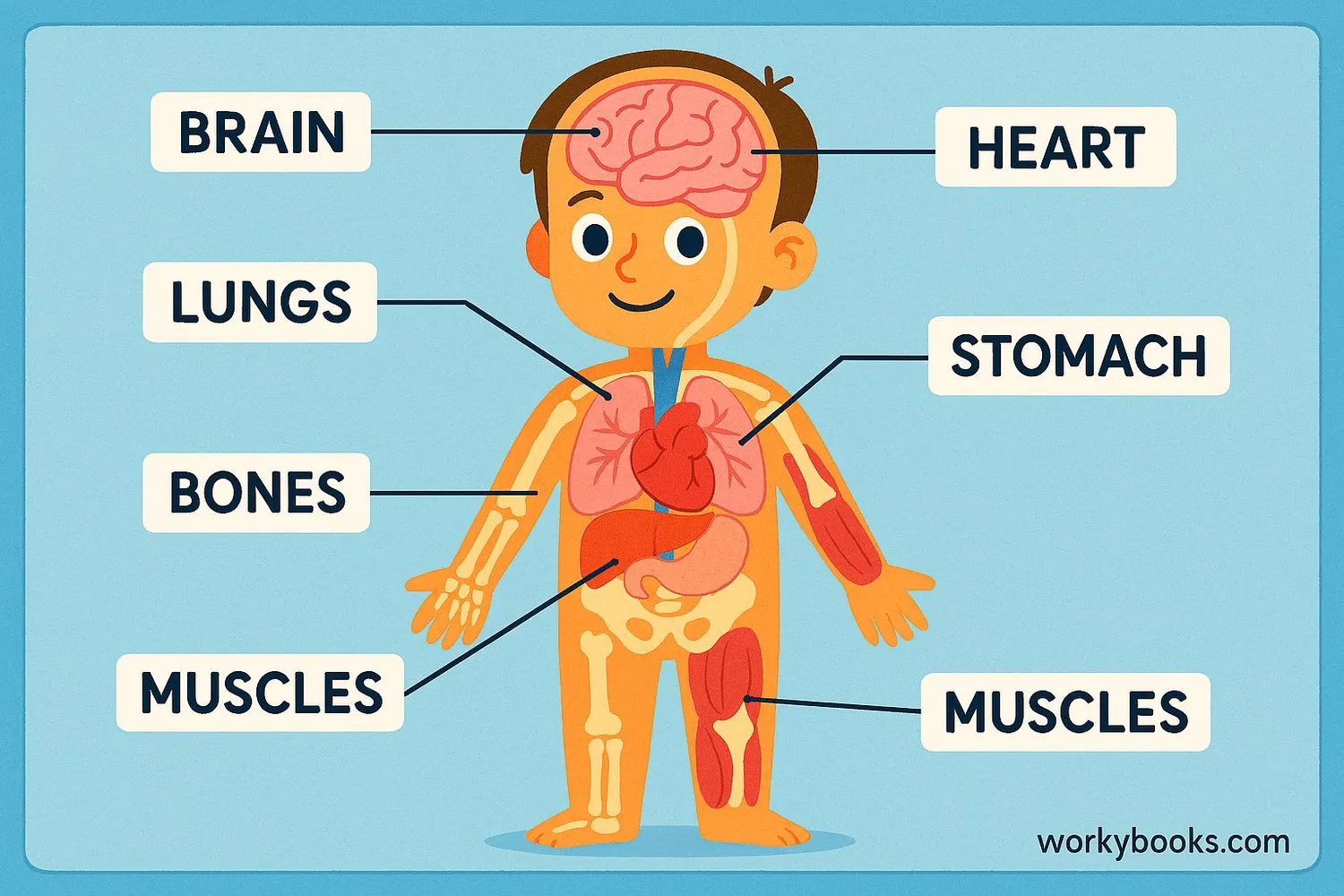
Anatomy is the science that studies the structure of living things. When we study human anatomy, we learn about all the different parts that make up our bodies, from tiny cells to large organs like the heart and brain.
Think of your body as an amazing machine with many interconnected parts. Anatomy helps us understand what each part does and how they all work together to keep you healthy and active. Doctors, nurses, and scientists study anatomy to help people when they're sick or injured.
Did You Know?
The word "anatomy" comes from Greek words meaning "to cut apart" because scientists first learned about the body by carefully dissecting (cutting apart) dead organisms.
Major Body Systems
Your body is made of several systems that work together to keep you alive and healthy. Each system has a special job to do. Let's explore the major body systems!
Skeletal System
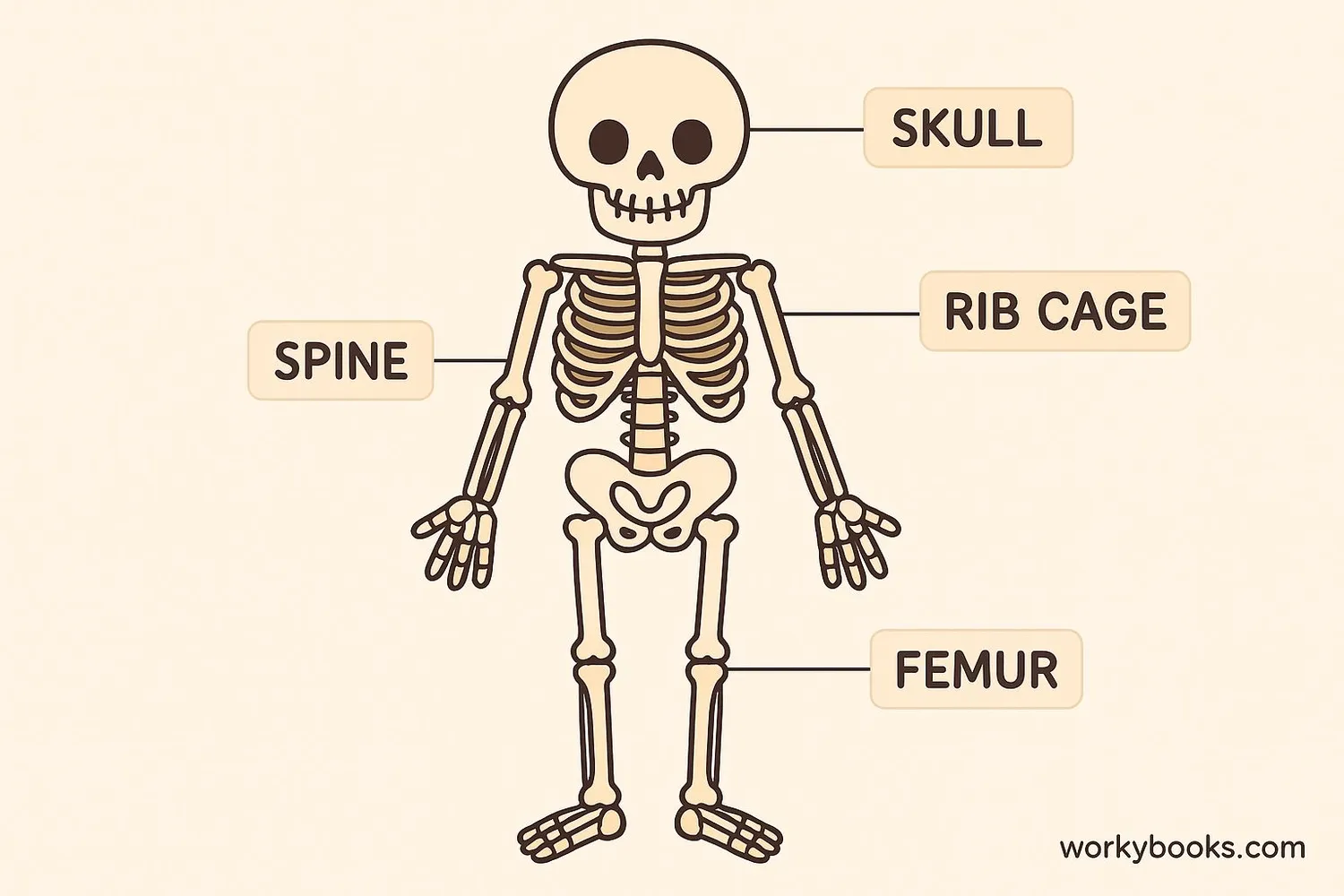
Your skeletal system is made up of all the bones in your body. Adults have 206 bones! Bones give your body shape, protect your organs, and help you move. Your skull protects your brain, and your rib cage protects your heart and lungs.
Muscular System
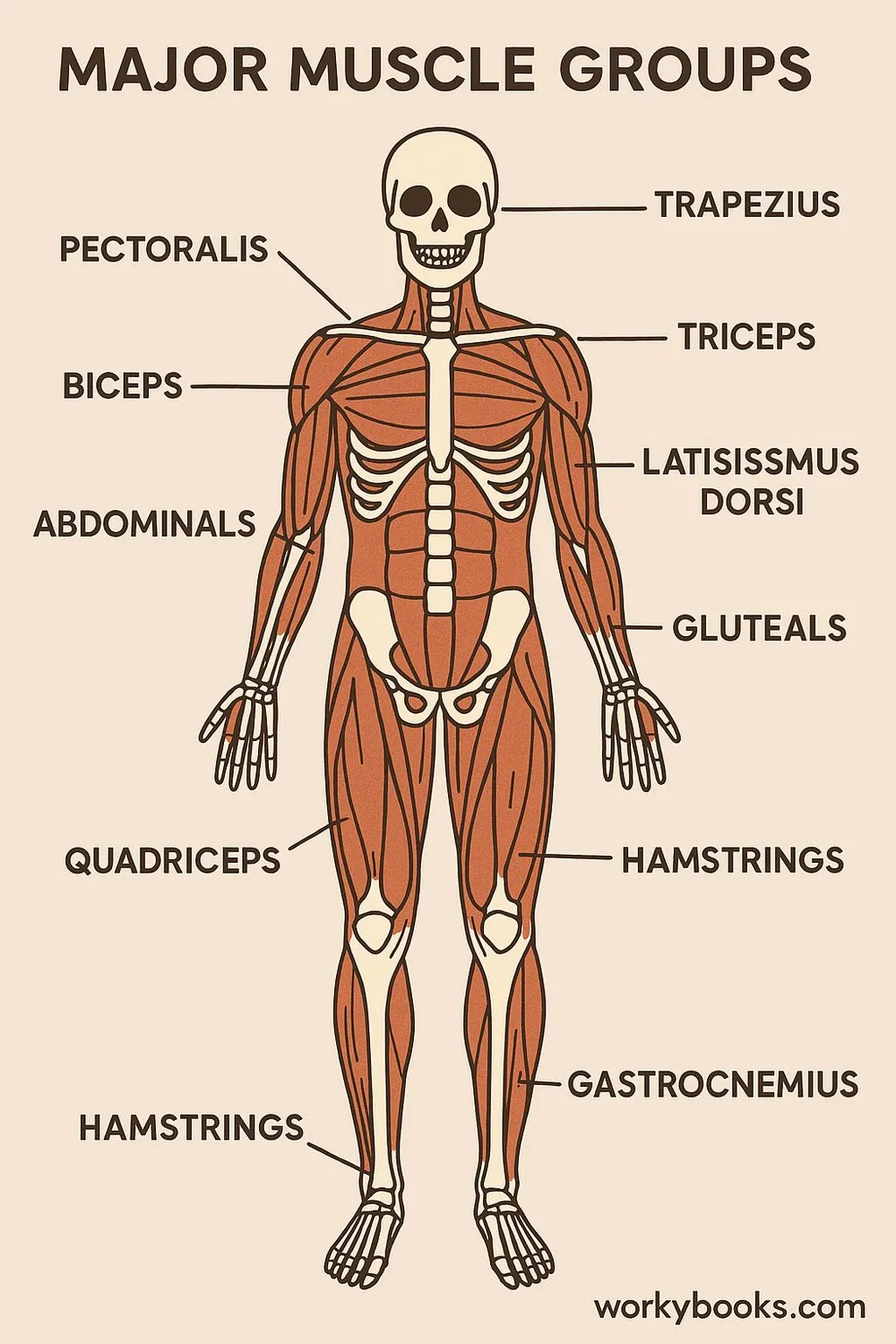
Your muscular system includes all your muscles. You have over 600 muscles! Muscles help you move, lift things, and even pump blood through your body. There are three types of muscles: skeletal (attached to bones), smooth (inside organs), and cardiac (heart muscle).
Circulatory System
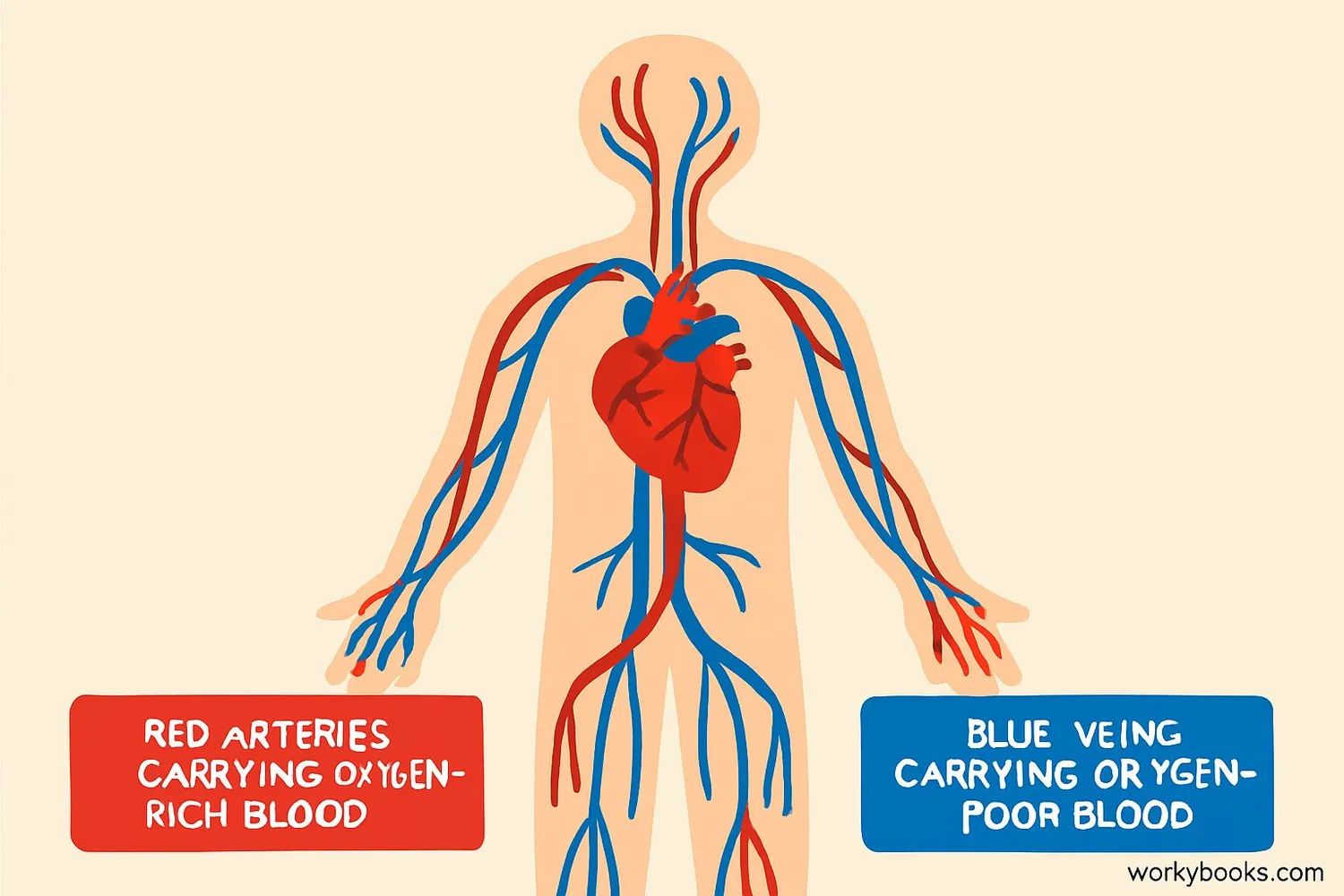
Your circulatory system moves blood throughout your body. It includes your heart, blood vessels (arteries, veins, and capillaries), and blood. The heart pumps blood to carry oxygen and nutrients to all your cells and removes waste products.
Nervous System
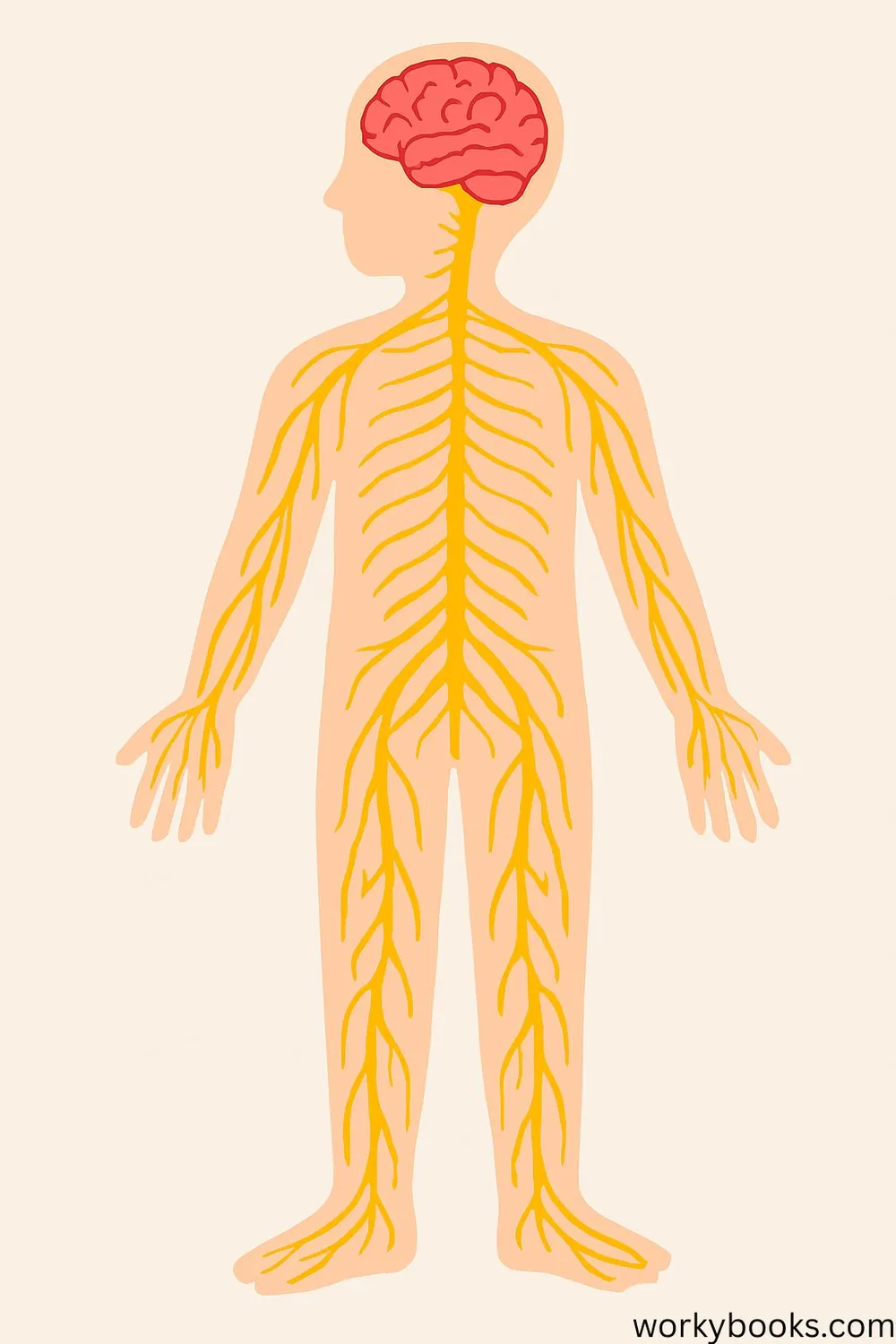
Your nervous system is like your body's electrical wiring. It includes your brain, spinal cord, and all the nerves throughout your body. It controls everything you do, from thinking and feeling to moving and breathing.
Respiratory System
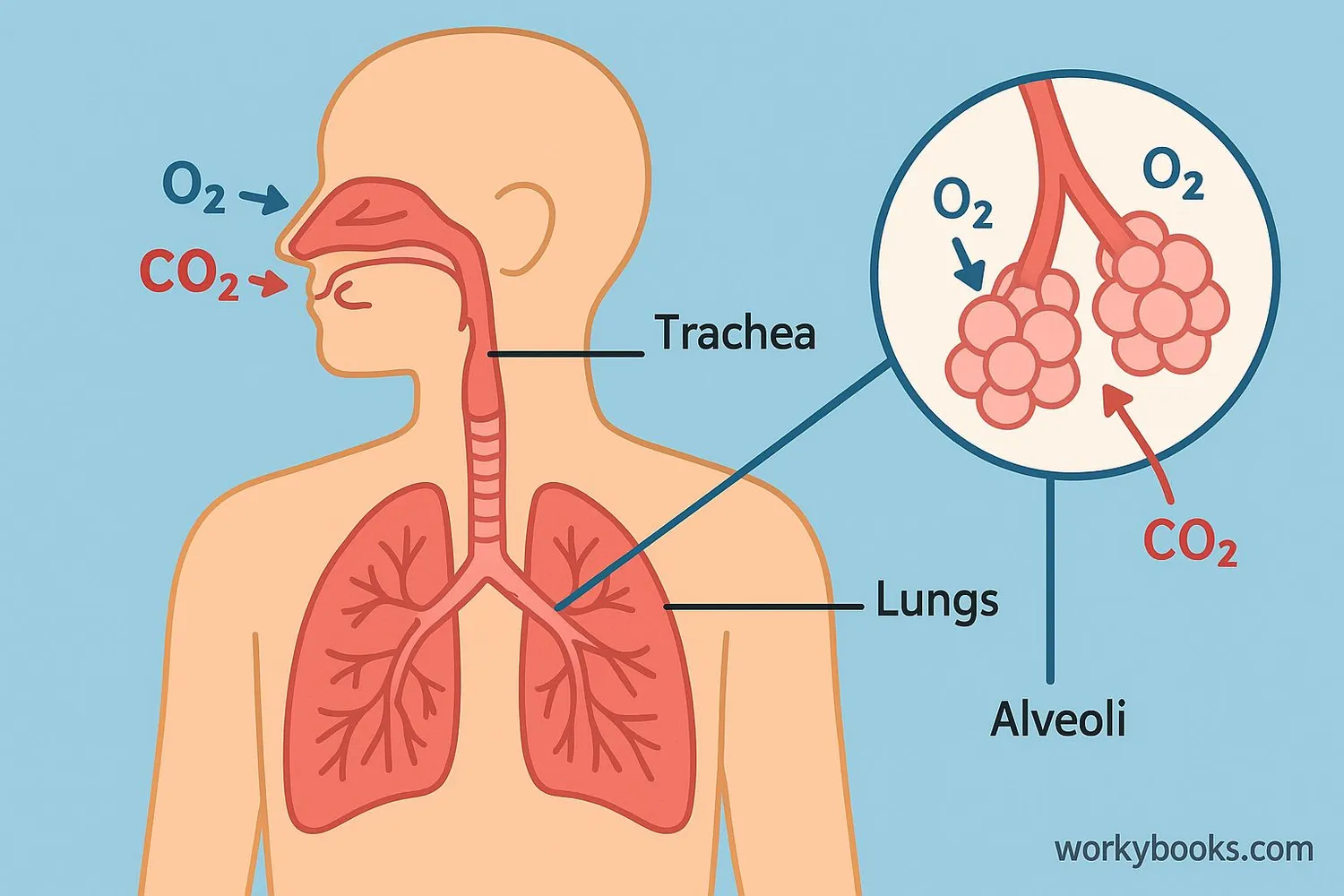
Your respiratory system helps you breathe. It includes your nose, trachea (windpipe), and lungs. When you breathe in, you take in oxygen. When you breathe out, you release carbon dioxide. This exchange of gases happens in tiny air sacs in your lungs called alveoli.
Digestive System
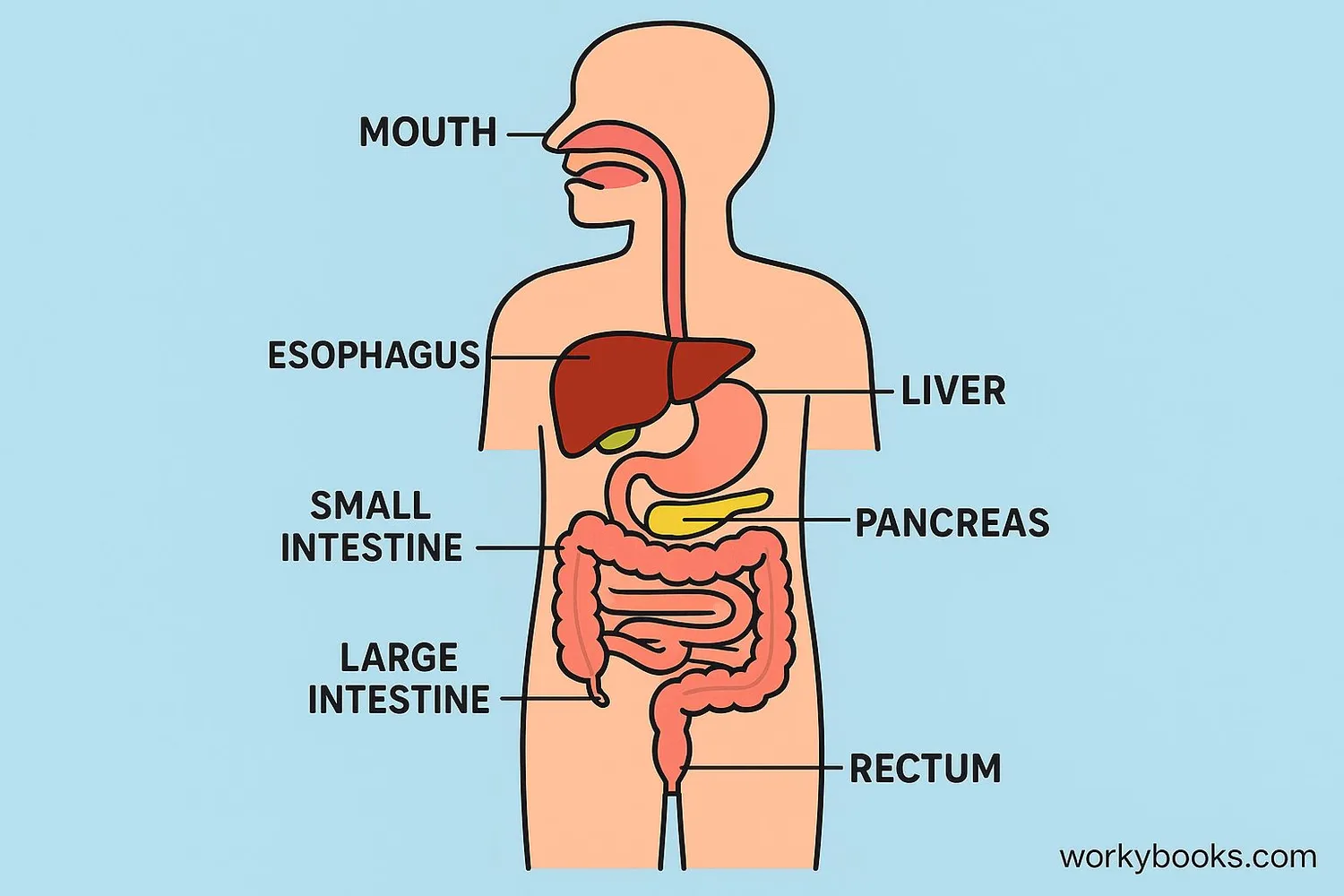
Your digestive system breaks down food so your body can use it for energy. It includes your mouth, esophagus, stomach, intestines, liver, and pancreas. Food is broken down into nutrients that your body can absorb and use.
Why Understanding Anatomy is Important
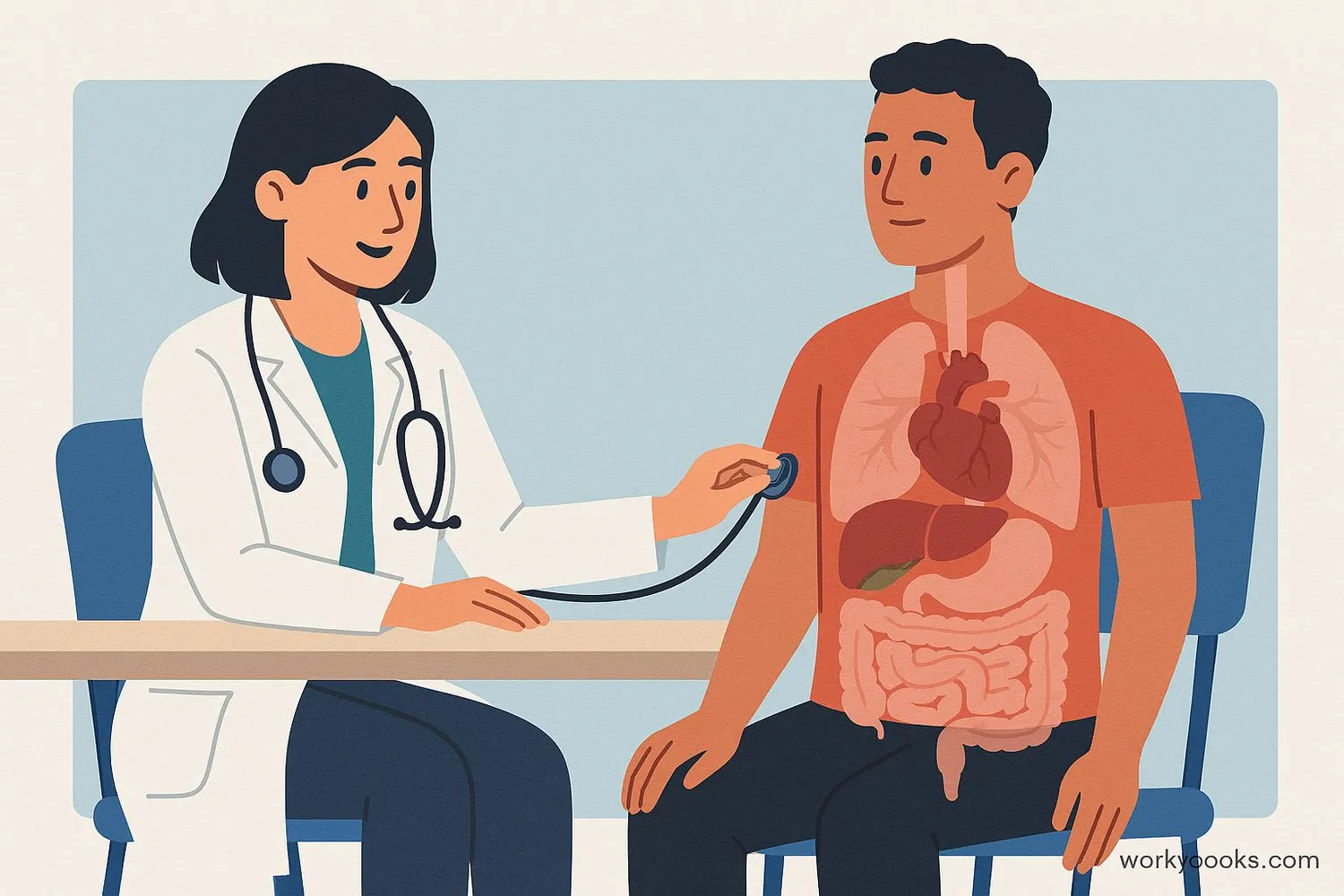
Understanding anatomy is important for many reasons:
Healthcare
Doctors and nurses need to know anatomy to diagnose and treat illnesses and injuries
Health Awareness
Knowing how your body works helps you make healthy choices
Scientific Discovery
Anatomy research leads to new medical treatments and technologies
Whether you want to be a doctor, athlete, artist, or scientist, understanding anatomy helps you appreciate the amazing machine that is your body!
Anatomy Quiz
Test your anatomy knowledge with this quiz! Answer all 5 questions to see how much you've learned.
Frequently Asked Questions
Here are answers to some common questions about anatomy:
Amazing Anatomy Facts
Discover some fascinating facts about the human body!
Skin Deep
Your skin is the largest organ in your body! An average adult's skin weighs about 8 pounds and covers an area of about 22 square feet.
Strong Bones
Your bones are stronger than steel! A block of bone the size of a matchbox can support 9 tons of weight - that's four times as much as concrete can support.
Heart Power
Your heart beats about 100,000 times every day! In an average lifetime, the human heart will beat more than 2.5 billion times.
Brainy Facts
Your brain generates about 12-25 watts of electricity - enough to power a low-wattage LED light bulb! It's also about 60% fat, making it the fattiest organ in the body.


